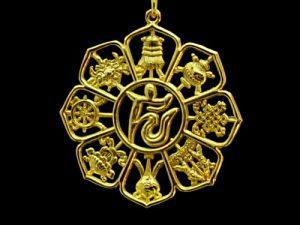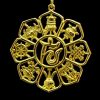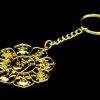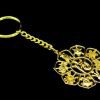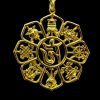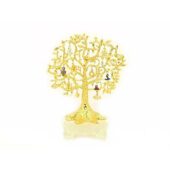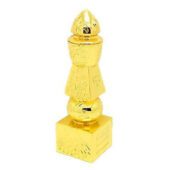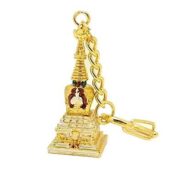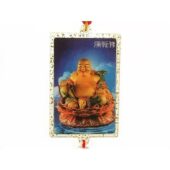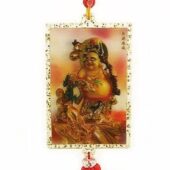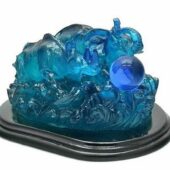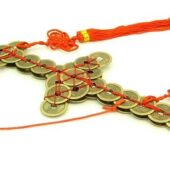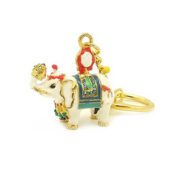Description
This is a keychain featuring the Eight Auspicious Objects. Carrying this Keychain around is believed to bring good blessings.
The Eight Auspicious Objects are a group of lucky Buddhist symbols that appear on many Buddhist textiles, objects and paintings. Besides, each symbol represents an aspect of Buddhist teaching. Thus, when they appear together, their powers are said to multiply.
The eight Buddhist auspicious symbols consist of a:
- parasol
- pair of golden fish
- the great treasure vase
- a lotus
- the right turning conch
- the endless knot
- the banner of victory
- the wheel of dharma
Next, these symbols derived from Indian iconography have become especially popular in Tibetan Buddhism. Here are what each of these symbols means and represents.
Parasol (chattra)
Royalty and spiritual power and protection from suffering, desire, obstacles and illness. The parasol dome can symbolise wisdom and the hanging skirt, compassion.
Golden Fishes (suvarnamatsya)
Happiness, freedom, abundance, good fortune, fertility and salvation.
Treasure Vase (kalasha)
Spiritual and material abundance. The ‘inexhaustible treasures’ possess special qualities. So however much is removed from the vase, it will always remain full. Therefore it symbolises long life and prosperity.
Lotus (padma)
Mental and spiritual purity. It is able to grow and blossom from the muddy water.
Conch Shell (sankha)
It is a symbol of power and sovereignty, the sound believed to banish evil spirits, scare away harmful creatures and avert natural disasters. Buddhism adopted it as a symbol of religious sovereignty and an emblem that spreads the truth of dharma.
Endless Knot (shrivasta)
The endless knot overlaps without a beginning or an end, symbolising the Buddha’s endless wisdom and compassion. Hence, it indicates continuity as the underlying reality of existence.
Victory Banner (dhvaja)
Victory of the Buddha’s teachings, enlightenment and wisdom over ignorance.
Wheel (dharmachakra)
Buddhism adopted the wheel to symbolise the teachings of the Budhha. Additionally, it also known as the wheel of law. hence, in Tibetan this means ‘the wheel of transformation’ or spiritual change. Thus, can represent the overcoming of all obstacles and illusions.

